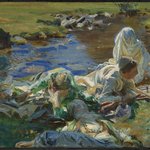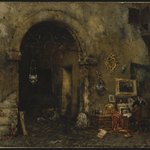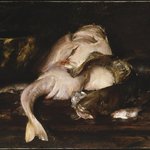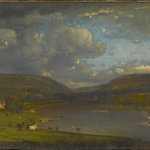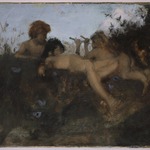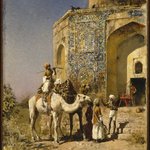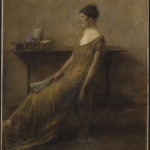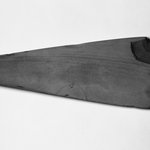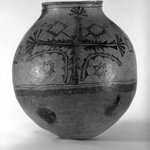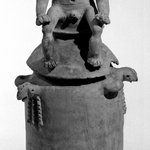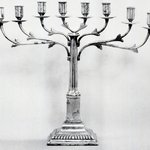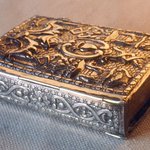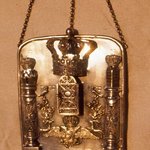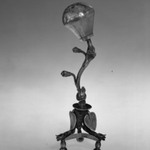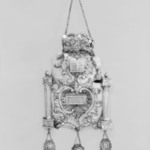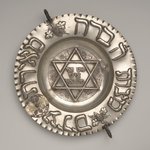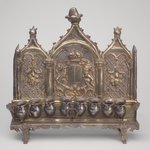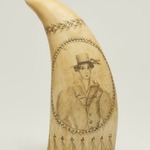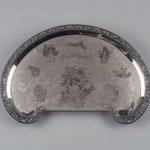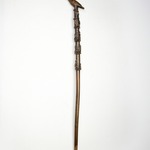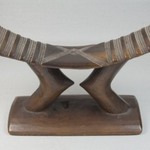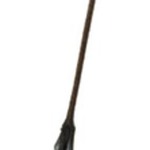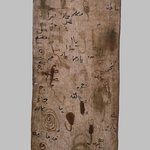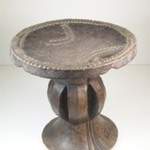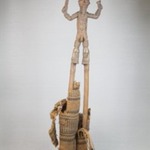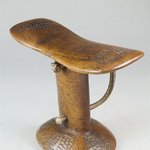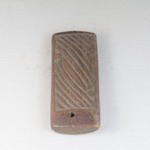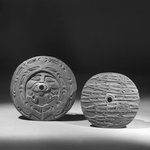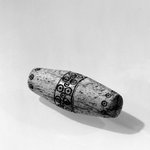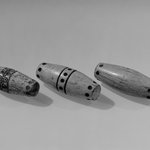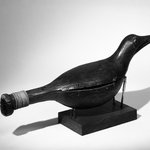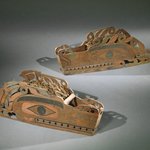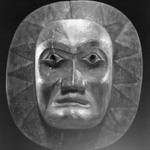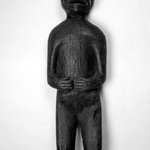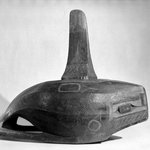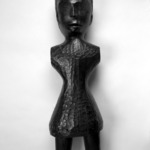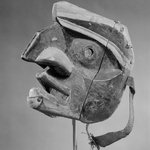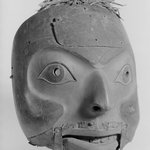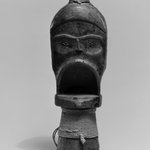Male Potlatch Figure
Arts of the Americas
In the early 1900s this Northwest Coast potlatch figure would have been called "primitive" art, as if it were a simpler version of European-derived art. However, the Native American artist who carved this figure was following the formal artistic traditions of Kwakwaka'wakw society. Potlatch figures were place outside a chief's large house during a potlatch to emphasize his power. At a potlatch, a celebration held for occasions such as births, deaths, marriages, and treaty signings, the chief gave away much of his valuable belongings to the attendees, affirming his wealth and power and obligating the recipients to reciprocate at some future time.
CULTURE
Gwa'sala Kwakwaka'wakw
MEDIUM
Wood, beads, pigment
DATES
late 19th or early 20th century
DIMENSIONS
43 x 14 3/8 x 8 in. (109.2 x 36.5 x 20.3 cm)
COLLECTIONS
Arts of the Americas
ACCESSION NUMBER
X1118.3
CREDIT LINE
Brooklyn Museum Collection
CATALOGUE DESCRIPTION
Male potlatch figure with head turned in profile. Facial features and ears are clearly delineated; pupils of eyes are indicated by black beads, and there is a hole in the center of each bead. The mouth is partially open. Traces of red and black paint remain on the face, and on headband on upperpart of forehead. The top of the head is flat. The torso lacks arms and lower part of legs. Adze-like marks appear on torso, neck and back of head. These figures were generally used during potlatches and early photographs record that they were sometimes dressed with robes or blankets perhaps signifying status or wealth of the person holding the potlatch.
EXHIBITIONS
MUSEUM LOCATION
This item is not on view
RECORD COMPLETENESS
Not every record you will find here is complete. More information is available for some works than for others, and some entries have been updated more recently. Records are frequently reviewed and revised, and we welcome any additional information you might have.


